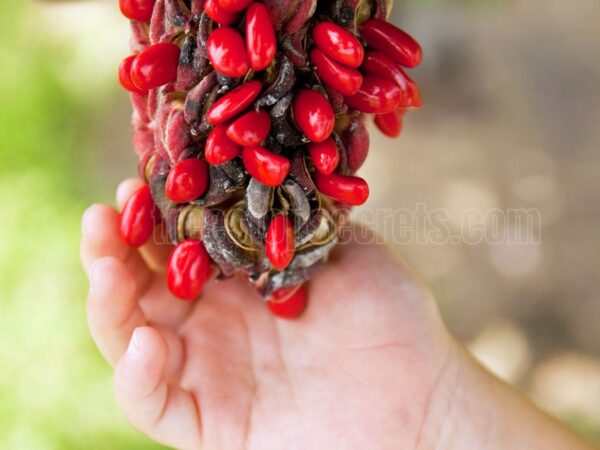If you've ever found yourself with a wilted hydrangea plant, you're not alone. The struggle to revive these beautiful blooms is real. In this post, we'll explore effective strategies to bring your wilted hydrangea back to life and restore its vibrancy. From proper watering techniques to optimal sunlight exposure, we've got you covered with practical tips to rejuvenate your beloved plant.
Why Hydrangeas Wilt
Heat Stress
Hydrangeas wilt when exposed to excessive heat, leading to rapid water loss and much moisture. To prevent this, provide shade during peak sun hours. Keep a close eye on your hydrangeas during heatwaves for any signs of wilting.
Insufficient Light
For healthy growth and beautiful blooms, make sure your hydrangeas receive adequate sunlight. Wilting can occur if they lack enough light. If you notice signs of wilting blooms, consider relocating the several hydrangeas to a brighter spot.
Water Issues
To avoid dehydration and wilting, regularly check the soil moisture of your hydrangeas. Adjust the watering schedule based on the plant's needs. Be cautious not to overwater, as it can cause root rot and subsequent wilting.
Soil Conditions
Plant your hydrangeas in soil that drains well to prevent waterlogging of the roots. The soil pH plays a crucial role in nutrient availability for hydrangeas. Enhance the soil with organic matter to ensure optimal hydration and nutrient absorption.
Choosing the Right Hydrangea
Varieties Prone to Wilting
Bigleaf hydrangeas, also known as hydrangea macrophylla, are more prone to wilting compared to other varieties. These delicate plants struggle in direct sunlight, leading to wilted leaves and flowers. On the other hand, smooth and oakleaf hydrangeas exhibit better resilience against wilting under the sun's harsh rays. Panicle hydrangeas, such as the popular 'Limelight' variety, boast increased resistance to wilting, making them a suitable choice for sunny locations.
Heat Tolerant Types
When selecting hydrangeas for sunny spots, opt for heat-tolerant varieties that can endure high temperatures without succumbing to wilting. These robust cultivars are specially bred to thrive in hot climates and maintain their vibrant blooms even in intense heat. Consider planting panicle hydrangeas or other heat-tolerant species to ensure your garden remains colorful and lively throughout the summer months.
Shade Loving Varieties
For areas with limited sunlight or shaded environments, choose shade-loving hydrangea varieties that are less likely to wilt in low light conditions. Oakleaf hydrangeas, in particular, excel in shady settings and display excellent tolerance to reduced sunlight levels. By selecting the right shade-loving hydrangea species, you can enjoy beautiful blooms without worrying about wilting issues caused by inadequate light exposure.
Best Planting Locations
Sun vs Shade
Hydrangeas thrive in part shade to full sun conditions. Different varieties have varying sunlight preferences. To prevent wilting, ensure a balance of sun exposure by planting them where they receive morning sun and afternoon shade. Adjust planting locations based on the specific sunlight requirements of your hydrangea variety.
Improper soil drainage can lead to root rot and wilting in hydrangeas. It is crucial to ensure that the soil has good drainage to prevent water accumulation around the roots, which can suffocate the plant. If you have poorly draining soil, consider using raised beds or containers for your hydrangeas to improve drainage and prevent wilting issues.
Wind Protection
Shielding hydrangeas from strong winds is essential to prevent dehydration and subsequent wilting. Strong winds can accelerate water loss from the leaves, leading to wilted and unhealthy plants. To protect your hydrangeas, consider installing windbreaks or planting wind-resistant shrubs nearby to create a barrier against strong winds and maintain optimal hydration levels for your plants.
Preventing Drooping
Proper Watering
To keep hydrangeas healthy, water deeply but not too often to encourage strong roots. Adjust watering based on the weather to prevent wilting. Always water at the base to avoid wetting the foliage, which can lead to drooping.
Mulching Tips
Applying mulch around hydrangeas helps maintain soil moisture and temperature regulation. Mulch prevents wilting by reducing water evaporation, ensuring hydration for the plant. Opt for organic mulch like pine straw for root protection from extreme temperatures.
Fertilization Schedule
Maintain a consistent fertilization routine to supply vital nutrients for hydrangeas. Avoid over-fertilizing as it can cause wilting and nutrient imbalances in the plants. Use a balanced fertilizer in spring to support robust growth and prevent drooping.
Care Techniques
Pruning Methods
Prune hydrangeas after flowering to maintain plant health. Removing dead or damaged branches improves air circulation, reducing wilting risk. Avoid heavy pruning to prevent stress-induced wilting.
Pest Control
Monitor hydrangeas for pests like aphids and spider mites causing wilting. Use neem oil as a natural pest control method. Regularly inspect leaves to detect pests early and prevent wilting.
Disease Prevention
Prevent fungal diseases such as powdery mildew by ensuring good air circulation around the hydrangea plant. Swiftly treat fungal infections to avoid wilting and plant damage. Reduce the risk of fungal diseases and wilting by avoiding overhead watering.
Final Remarks
Ensure your hydrangea's health by understanding why they wilt, selecting the right type for your space, planting them in ideal locations, preventing drooping with proper support, and implementing care techniques. By following these steps, you can enjoy vibrant and flourishing hydrangea plants in your garden. Remember to monitor their water intake, sunlight exposure, and soil conditions regularly to maintain their well-being.
Take charge of your hydrangeas' vitality today by applying these expert tips. Your efforts will be rewarded with stunning blooms and robust plants that enhance the beauty of your outdoor environment. Share your success with others and inspire them to create thriving hydrangea displays in their own gardens.
Frequently Asked Questions
Why do hydrangeas wilt?
Hydrangeas can wilt due to underwatering, excessive sunlight, or poor soil drainage. Ensure proper watering, provide shade during hot periods, and plant them in well-draining soil to prevent wilting.
How to choose the right hydrangea for my garden?
Consider factors like climate, size of the plant, bloom color, and soil pH when selecting a hydrangea variety. Choose one that thrives in your region's conditions and fits your garden's aesthetic preferences.
What are the best planting locations for hydrangeas?
Plant hydrangeas in areas with well-draining soil, partial shade to protect from harsh sun exposure, and adequate air circulation. Avoid planting in low-lying spots where water may accumulate and cause root rot.
How can I prevent drooping in my hydrangea plants?
To prevent drooping in hydrangeas, ensure they receive sufficient water without overwatering, provide adequate shade during intense sunlight hours, and avoid planting them in compacted or poorly draining soil.
What care techniques are essential for healthy hydrangea plants?
Regularly water hydrangeas to keep the soil consistently moist but not waterlogged. Mulch around the base of the plant to retain moisture and regulate temperature. Prune selectively to remove dead or weak growth and promote new blooms.
Image Source: Paid image from CANVA




